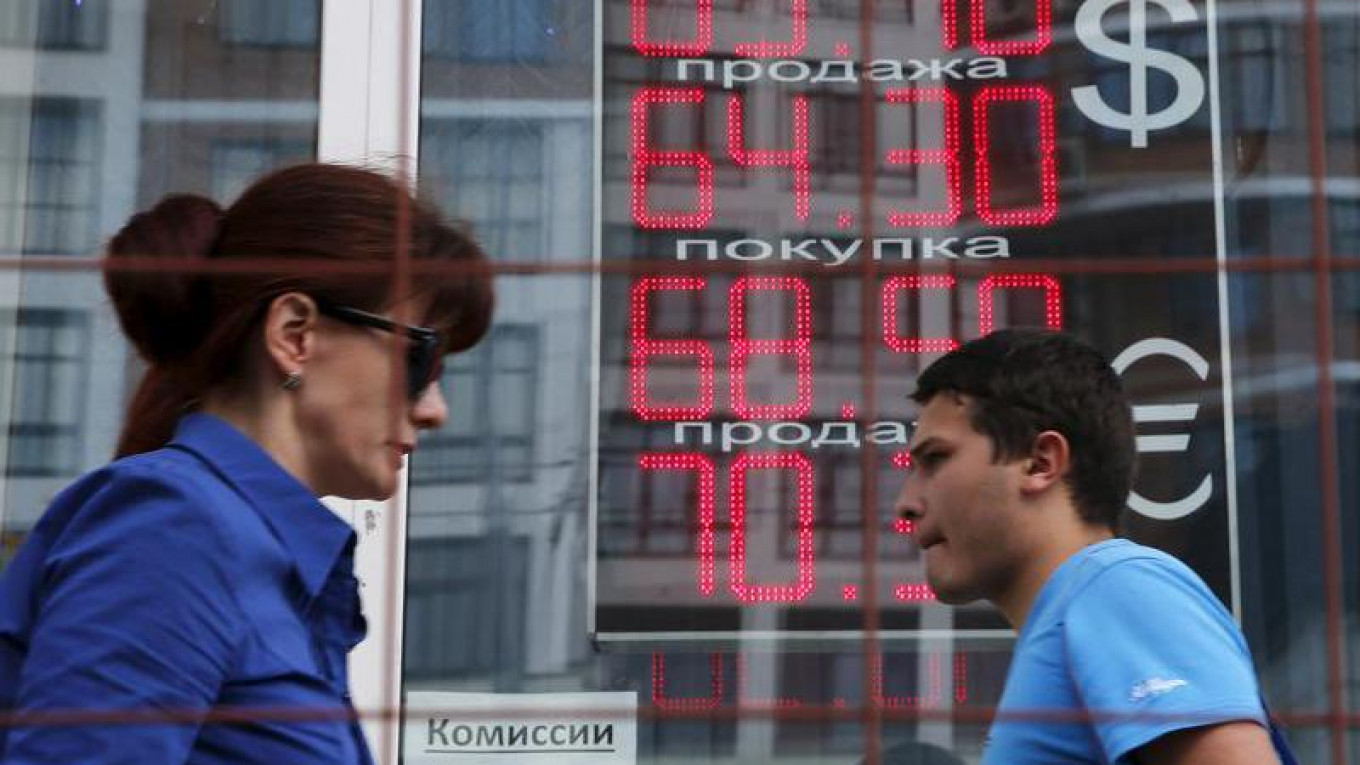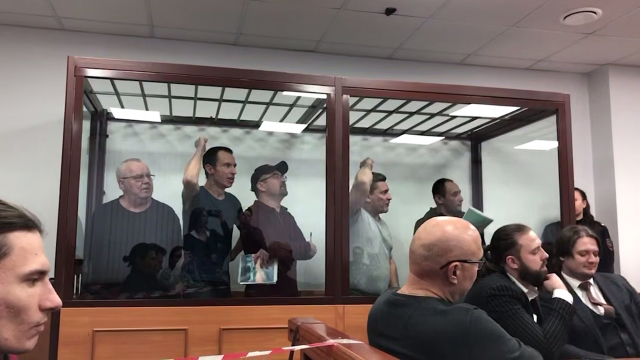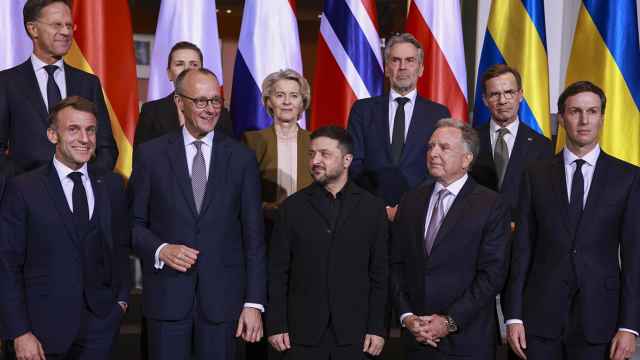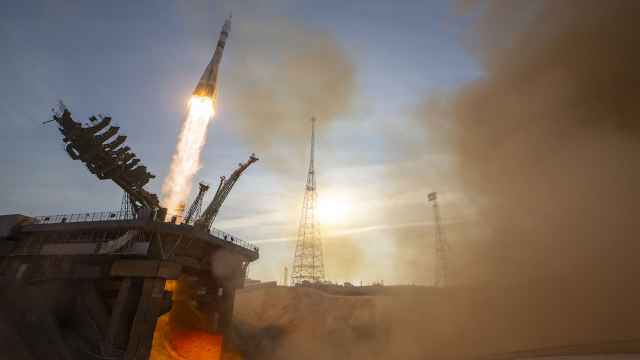After months of instability and plunging rates, the ruble has finally gained 17 percent against the U.S. dollar since early January, hitting 63.75 to the dollar on July 20.
Yet this might not be good news for Russian policy-makers. Instead, they are left with some difficult decisions. “The ruble is growing stronger despite certain price volatility on commodity markets,” said Russian President Vladimir Putin in one meeting. “In this context, of course, we must think about what we should do and how we should do it.”
Presidential spokesman Dmitry Peskov explained further. A stronger ruble had some advantages, he said, but a balance was needed and certain measures would be required with regard to export-oriented industries.
According to one senior federal official, the government the Finance Ministry and Central Bank are still considering what these measures would be. The best approach for the federal budget could be to maintain an exchange rate of 65-70 rubles to the dollar, given the current price of oil, the official said. Several others also told the Vedomosti newspaper that a rate of 65-70 rubles to the dollar would be the most advantageous to Russia.
The ruble has gained strength for several reasons, says Oleg Kuzmin of Renaissance Capital, They include a halt in capital outflow — the result of a decline in payments on external debt coupled with limited refinancing possibilities such as currency inflow —, the near complete halt in raw materials exports due to the streamlining of the banking system, the lack of domestic demand for foreign assets, and a drop in demand for foreign currency among ordinary citizens due to falling incomes.
Even though the Q2 current account balance has contracted 80 percent to $3.5 billion, the ruble continues to strengthen because capital outflow was even lower – just $2.4 billion, says Kuzmin. The ruble is also making gains as firms sell their foreign currency to make their quarterly tax payments in rubles, he said.
As geopolitical risks decline, certain “fiscal bonuses,” also decline, says Yulia Tseplyayeva, Director of the Center for Macroeconomic Research at Sberbank. “The ruble gained strength the moment Russia and Turkey reconciled,” she says. Vladimir Tikhomirov of BCS says that as the risk associated with some developing countries increases, Russia does not seem like such a negative exception as it did two years ago.
The ruble remains strongly tied to the price of oil, said Dmitry Polevoi of ING. “When considering the dynamics of the ruble exchange rate in relative terms, 2016 sets a record for the last 20 years,” he says. If that isn't a reason for concern, then at least for the authorities should note that fact, he said.
The budget is based on an average annual exchange rate of 67.2 rubles per dollar. The average rate from the start of the year through July 20 was 69.5 rubles per dollar. Yet the average rate from the start of Q2 to the present was 65.4 rubles, and has stood at 65 or lower since mid-June.
Finance Minister Anton Siluanov recalled recently that a strong ruble “five, seven, even three years ago” might have had a positive impact on people’s real incomes, but that it hurt the economy.
In a study commissioned by the Central Bank, 69 percent of companies and one-third of exporters said that they prefered a strong ruble, while 31 percent and 22 percent respectively said that they wanted a weaker ruble. Not a single company said that it needed a weak ruble in order to begin exporting. “[Companies] want to modernize. They are interested in new equipment, often imported,” said Central Bank Chairperson Elvira Nabiullina, who admitted that the results surprised her. “Publicly, businesses usually call for a weakening of the exchange rate.”
The Central Bank does not have any quantitative criteria for the ruble, Nabiullina said. The decision to resume intervention does not depend on the exchange rate or the price of oil – only on confidence that Central Bank actions will not lead to increased volatility in the currency market, she said.
In this situation, the Central Bank has two tools at its disposal – it can cut interest rates in order to check the unwarranted appreciation of the ruble, or it can purchase foreign currency.
It is unlikely that the Finance Ministry will start buying foreign currency when it really needs to be selling it to cover the budget deficit, say Polevoi at ING. Authorities can not do anything formally or directly to influence the ruble exchange rate, and because President Putin has made macroeconomic stability and low inflation a priority, it is implied that the government will not actively intervene in monetary policy, he said.
The Central Bank also does not currently interfere with currency trading, says Tikhomirov. it tries to influence the market through other means: interest rates, reserve requirements, and other requirements in order to reduce speculation.
Analysts
are convinced that the cost of the ruble is close to its realistic
value, yet Natalia
Orlova of Alfa-Bank forecasts that the exchange rate will reach 70
rubles to the dollar by year’s end. If the Kremlin is to move, then
time could soon be against them.
A Message from The Moscow Times:
Dear readers,
We are facing unprecedented challenges. Russia's Prosecutor General's Office has designated The Moscow Times as an "undesirable" organization, criminalizing our work and putting our staff at risk of prosecution. This follows our earlier unjust labeling as a "foreign agent."
These actions are direct attempts to silence independent journalism in Russia. The authorities claim our work "discredits the decisions of the Russian leadership." We see things differently: we strive to provide accurate, unbiased reporting on Russia.
We, the journalists of The Moscow Times, refuse to be silenced. But to continue our work, we need your help.
Your support, no matter how small, makes a world of difference. If you can, please support us monthly starting from just $2. It's quick to set up, and every contribution makes a significant impact.
By supporting The Moscow Times, you're defending open, independent journalism in the face of repression. Thank you for standing with us.
Remind me later.






